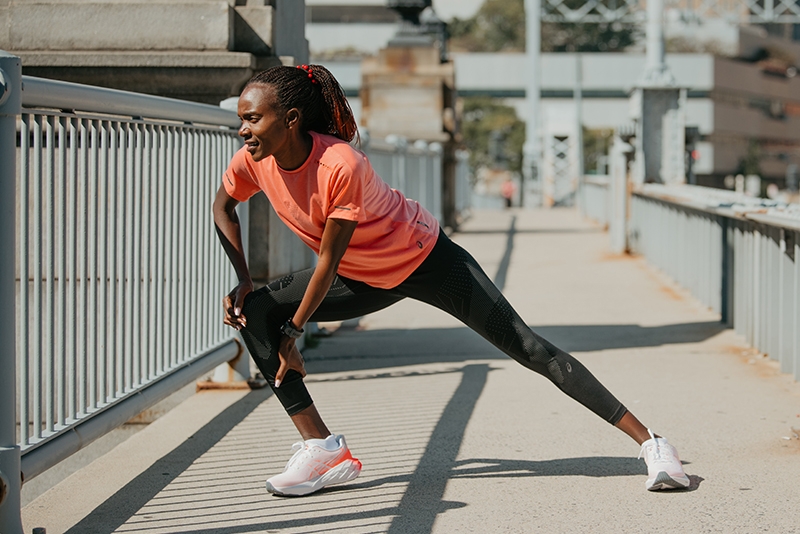Release Your Possible: Running Strategy Fundamentals for Peak Performance
Release Your Possible: Running Strategy Fundamentals for Peak Performance
Blog Article
Taking Care Of Typical Running Pains: Reasons, Solutions, and Avoidance
As joggers, we commonly experience numerous pains that can prevent our performance and pleasure of this physical activity. By checking out the origin reasons for these running discomforts, we can uncover targeted remedies and preventive actions to guarantee a smoother and extra fulfilling running experience.
Typical Running Discomfort: Shin Splints
Shin splints, a typical running discomfort, frequently arise from overuse or improper footwear during physical task. This condition, medically referred to as median tibial tension syndrome, shows up as discomfort along the inner edge of the shinbone (shin) and prevails among athletes and runners. The repeated stress and anxiety on the shinbone and the tissues connecting the muscle mass to the bone brings about swelling and pain. Runners who quickly boost the strength or period of their exercises, or those who have flat feet or improper running methods, are especially prone to shin splints.
To avoid shin splints, people ought to gradually raise the intensity of their workouts, use proper footwear with correct arch support, and keep versatility and strength in the muscular tissues surrounding the shin. If shin splints do take place, preliminary therapy includes remainder, ice, compression, and elevation (RICE) In addition, integrating low-impact tasks like swimming or cycling can aid maintain cardio fitness while permitting the shins to heal. Consistent or severe situations might require clinical evaluation and physical therapy for reliable management.
Typical Running Discomfort: IT Band Disorder
In addition to shin splints, another common running pain that professional athletes frequently come across is IT Band Disorder, a problem created by inflammation of the iliotibial band that leaves the external upper leg and knee. IT Band Disorder generally materializes as pain on the exterior of the knee, particularly throughout tasks like running or biking. The iliotibial band is a thick band of fascia that links the aware of the shin, and when it ends up being irritated or limited, it can scrub against the thigh bone, resulting in discomfort and pain.
Runners experiencing IT Band Syndrome may notice a painful or hurting experience on the external knee, which can aggravate with ongoing activity. Elements such as overuse, muscle imbalances, improper running kind, or poor workout can add to the advancement of this condition. To avoid and alleviate IT Band Disorder, joggers must focus on stretching and reinforcing workouts for the hips and thighs, proper shoes, progressive training progression, and addressing any kind of biomechanical problems that may be exacerbating the issue. Ignoring the symptoms of IT Band Syndrome can cause persistent problems and prolonged recuperation times, stressing the significance of very early intervention and correct administration see it here techniques.
Common Running Pain: Plantar Fasciitis
:max_bytes(150000):strip_icc()/effective-30-minute-running-workouts-2911891-0927-70272e09ac83449cadb9f1ce51656c0c.jpg)
Plantar Fasciitis can be attributed to various elements such as overtraining, inappropriate footwear, running on hard surface areas, or having high arches or flat feet. To avoid and relieve Plantar Fasciitis, joggers can incorporate stretching workouts for the calf bones and plantar fascia, put on encouraging shoes, keep a healthy and balanced weight to lower strain on the feet, and gradually increase running intensity to stay clear of abrupt stress and anxiety on the plantar fascia. If signs and symptoms linger, it is suggested to consult a healthcare professional for correct medical diagnosis and treatment options to address the problem properly.
Typical Running Discomfort: Runner's Knee
After dealing with the obstacles of Plantar Fasciitis, an additional common issue that joggers usually deal with is Runner's Knee, a common running discomfort that can impede athletic efficiency and cause pain throughout physical activity. Jogger's Knee, additionally referred to as patellofemoral pain disorder, materializes as discomfort around or behind the kneecap. This problem is frequently credited to overuse, muscular tissue discrepancies, improper running techniques, or issues with the alignment of the kneecap. Joggers experiencing this pain may really feel a boring, hurting pain while running, going up or down stairways, or after prolonged durations of sitting. To stop Runner's Knee, it is vital to incorporate appropriate warm-up and cool-down regimens, maintain solid and well balanced leg muscle mass, put on suitable shoes, and gradually enhance running strength. If signs continue, consulting from a medical care professional or a sports medication professional is recommended to detect the underlying reason and create a tailored treatment plan to relieve the pain and avoid more complications.
Usual Running Pain: Achilles Tendonitis
Typically affecting joggers, Achilles Tendonitis is an unpleasant condition that affects the Achilles tendon, triggering discomfort and potential limitations in exercise. The Achilles tendon is a thick band of cells that attaches the calf bone muscle mass to the heel bone, important for activities like running, jumping, and walking - useful guide. Achilles Tendonitis typically establishes due to overuse, improper shoes, poor extending, or sudden increases in exercise
Signs And Symptoms of Achilles Tendonitis include pain and rigidity along the tendon, particularly in the early morning or after periods of lack of exercise, swelling that worsens with activity, and perhaps bone stimulates in chronic situations. To prevent Achilles Tendonitis, it is vital to extend properly previously and after running, put on appropriate footwear with appropriate assistance, gradually enhance the strength of workout, and cross-train to lower repetitive anxiety on the ligament.
Verdict

Report this page